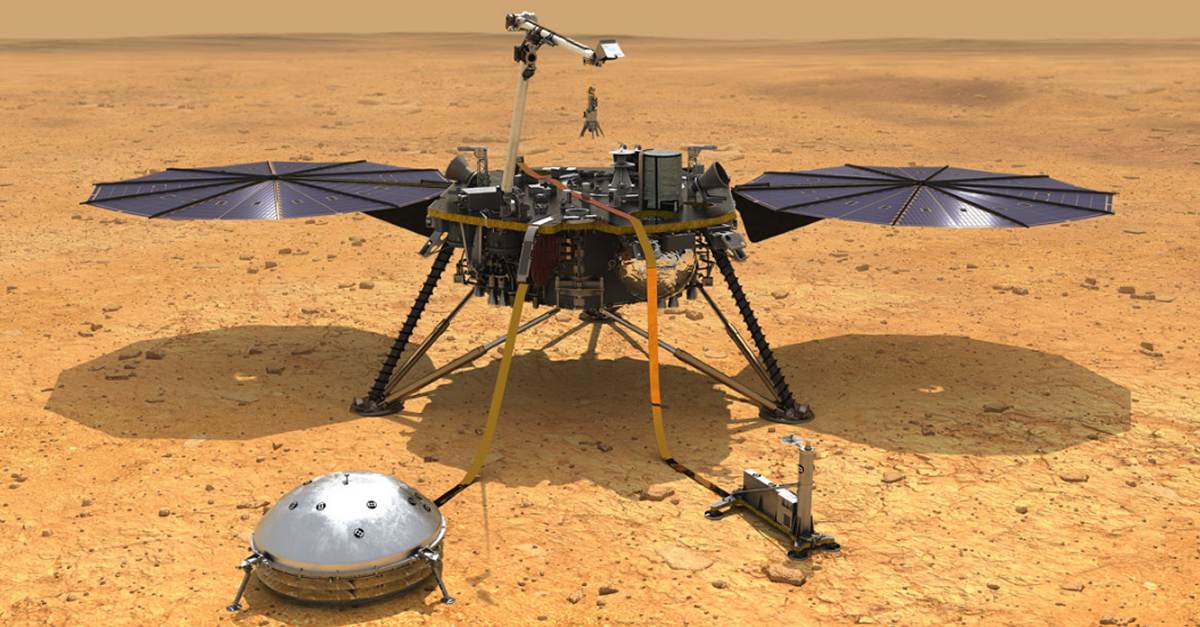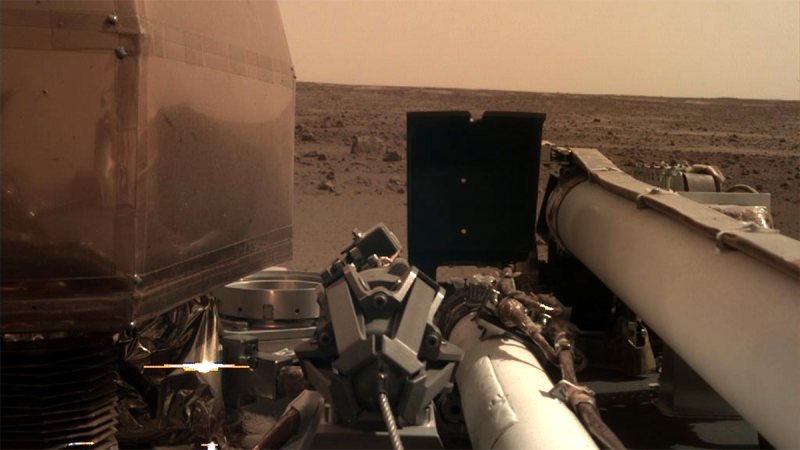
Image: NASA
Things are looking good for NASA’s InSight lander – its solar panels were successfully deployed just hours after landing on Mars.
After completing a trip of hundreds of millions of kilometres, InSight (short for Interior exploration using Seismic Investigations, Geodesy and Heat Transport) touched down just before 7:00am AEDT yesterday.
The InSight mission will be investigating what’s happening beneath the surface of the red planet, which is expected to reveal valuable information on how Mars, Earth and other planets in our solar system were formed.
One of the crucial first steps in InSight’s activities after landing was to unfurl its solar panels, which open like a folding fan. Each of the panels is 2.15 m in diameter and are comprised of SolAero ZTJ triple-junction solar cells arranged on Orbital ATK UltraFlex arrays. It’s expected the panels will provide 600-700 watts of power under favourable conditions and even when coated in dust, they should produce 200-300 watts – assuming the dust isn’t too thick of course.
The panel design is based on that used for NASA’s Phoenix Mars Lander, although InSight’s panels are larger to provide more power and structural strength.
“The InSight team can rest a little easier tonight now that we know the spacecraft solar arrays are deployed and recharging the batteries,” said NASA’s Tom Hoffman. “It’s been a long day for the team. But tomorrow begins an exciting new chapter for InSight: surface operations and the beginning of the instrument deployment phase.”
InSight’s batteries are Li-ion nickel-cobalt-aluminum oxide chemistry (NCA), the first time NCA has been used on a mission. More on InSight’s batteries can be found here and other lander specs here.
The solar panels and battery system will have to last at least two years. NASA has a good track record on this front. The solar-powered Mars rover Opportunity landed on the red planet in January 2004 for a mission expected to last for just over 92 Earth days – and it soldiered on for more than 14 years. However, InSight’s panels don’t look quite as robust as Opportunity’s.
The next step for InSight is to deploy its 1.8m robotic arm and use the attached camera to take imagery of the ground around it, enabling NASA engineers to decide the best spots to place some of the scientific instruments carried by the craft.

One of the first photos taken by the camera | Image: NASA
One of the instruments to be deployed is a Heat Flow and Physical Properties Probe, which can take temperature readings up to almost 5 meters below the surface.
It will take two to three months before the instruments, including a seismometer, are fully deployed and sending back information to NASA.

 RSS - Posts
RSS - Posts



Those solar cells are 29.5% efficient. That’s pretty impressive. Mind you, I’m impressed by the fact it’s possible to put 22% efficient panels on your roof.